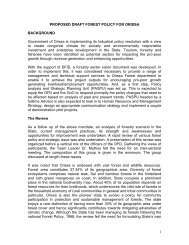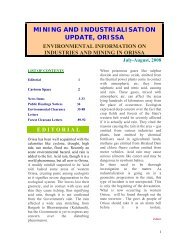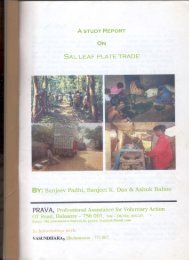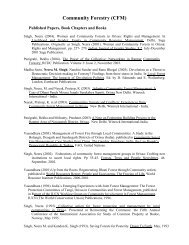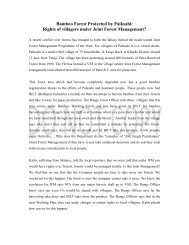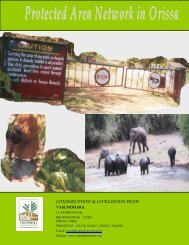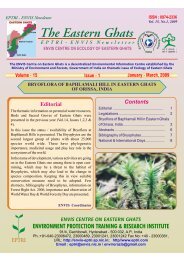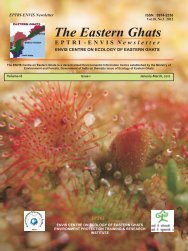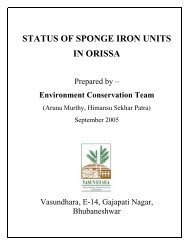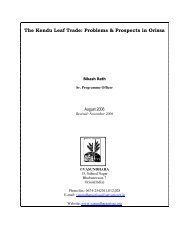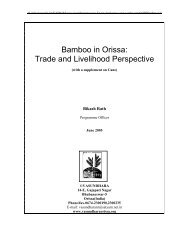DEVOLUTION OF FOREST MANAGEMENT - Vasundhara
DEVOLUTION OF FOREST MANAGEMENT - Vasundhara
DEVOLUTION OF FOREST MANAGEMENT - Vasundhara
- No tags were found...
Create successful ePaper yourself
Turn your PDF publications into a flip-book with our unique Google optimized e-Paper software.
9attend the general body meeting. Usually male individuals attend the meetings. Evenafter the appointment of women members in the E.C and one female from everyhousehold representing in the general body, they hardly come to the meetings. Duringvery few occasions only when there is a meeting called by the FD or if there are anyvisitors from outside their presence is seen in the meeting. This kind of involvementcan at best be viewed as superficial participation.3.2.7 Rules relating to Forest Protection/ PatrollingProtection started with ‘complete restriction on entering the forest’. No individual wasallowed to go to the forest. Initially, six persons used to go for patrolling each day.Later on the number of pallias (volunteers for patrolling) were reduced to four. Now,two persons go for patrolling duty each day. Patrolling duties are on rotation basis andon a household basis (i.e. one person from the household whose turn comes).The system of patrolling is termed as "thengapalli", thenga refers to the wooden stick/baton that passes from household to household signifying the "turn" of that household.The patrolling responsibility thus shifts from household to household on a rotationalbasis. Night patrolling was also done initially for a period of two years. Graduallywhen the external threat reduced this was stopped. For the initial period of threemonths there was no forest protection committee. The president used to coordinate theentire process. In case any problem arose it was solved with mutual understanding.Recently when the study was carried out voluntary patrolling discontinued.3.2.8 Rules related to cleaning and thinning operationsThe General Body takes decision for annual cleaning and thinning operations. Acommon meeting of the village is convened where in at least one person from everyhousehold is present. The decisions are communicated to the Forester and the localRanger through the committee members. Under the joint supervision of the Forester,F.G. and the Committee cleaning is undertaken. In practice they do not remain presentfor the entire day of cleaning. President remains present in the spot during thecleaning period. However this does not apply to all members.During the silviculture operations only the invaluable species, dry and fallen branches,deceased tree branches and matured bamboo poles are harvested. No one is allowed tocut green trees. This was decided to allow the valuable species to grow. Differentpatches are being cleaned on rotational basis.Timeline of the functional dimension of Forest Protection and Managementsystem1955-60 Forest given in coupe to private contractors1970-71 Stones for construction of dam in the nearby was collected from thishillock1979-80 Plantation in Anabadi land adjacent to Bindha RF by Afforestationdepartment (Around 10,000 saplings were planted)1985 Conflict with Jhariapalli village on control rice resulting to protectioninitiation1985 First informal FPC formed1985 Informal set of rules framed by the committee1986 Milupada hamlet was included in protection



